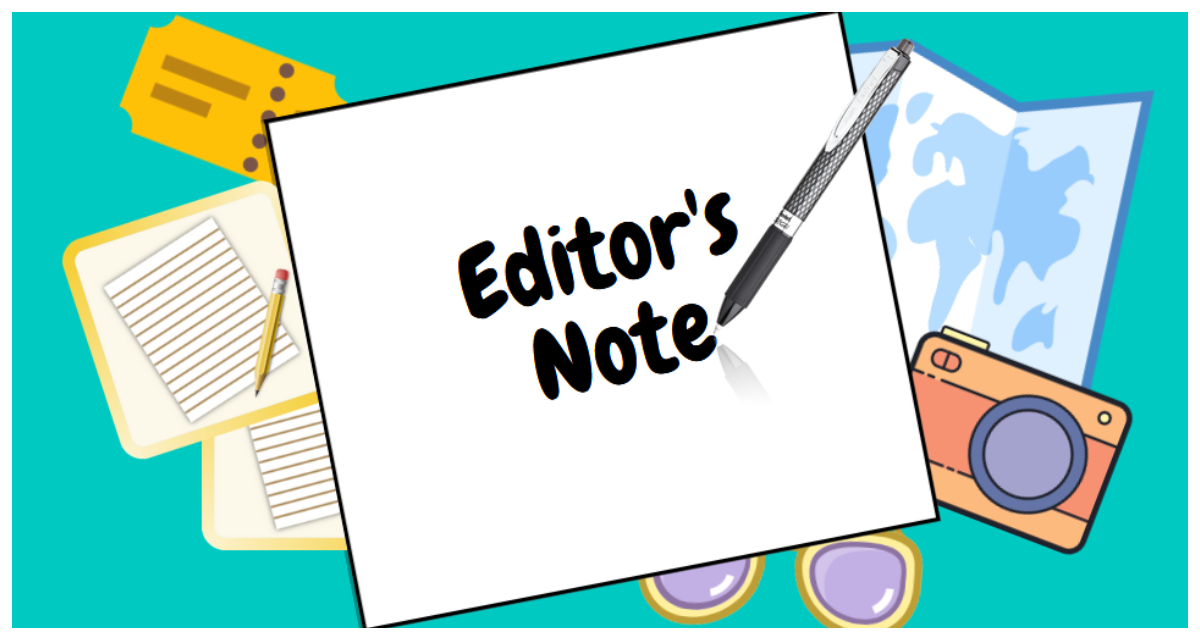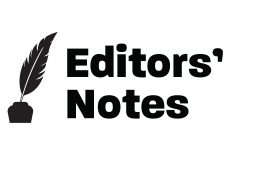A regular element of a press release is an Editor's Note. It appears at the bottom of the press release and offers background information on the author. It is a fantastic approach to offer background information on the author as well as the firm about which the individual is reporting to a reporter. In this post, we'll go through how towrite an editor's note.
An editor's note is a minor but crucial part of a press release. It enables the individual who wrote the release to convey information about themselves or, the firm, and any other essential information that would not fit in the body of the press release itself to the person with whom the release is being shared. It gives a personal touch to the press release. It also makes it a little more eye-catching.

Editor's Note
What Should An Editor's Note Contain?
An editor's remark should contain a variety of information. It is based on the company and the scenario, as well as the facts in the press release. However, some of the details you might wish to provide in an editor's note are as follows:
Information about yourself. In the editor's remark area, you might like to write some information about yourself. This might contain information about your credentials, such as where you went to school and your work experience.
Details about the firm. You might include a few phrases about the firm for whom you are creating the press release. For example, you may add information about when your firm was created, what the company does, or the sorts of products or services it provides.
Contact information is provided. The editor's note should also include the author's name, title, phone number, email address, and other contact information.
Example Of Editor's Note
New Information Technology Adoption: Are You Ready for It?
In today's enterprises, technology is critical to information distribution. From governments to local volunteer chapters, information sharing is no longer restricted by time but is instead rapid and cost-effective. To survive and remain competitive, organizations are actively investing in simplifying their information system capabilities. Nonetheless, not all firms embrace emerging technology as they become available. The evolution of technology solutions into useable and effective information systems that meet the commercial goals of businesses continues to be a challenge. Every businesswants to make the greatest use of its resources. However, several factors might influence the success of technology adoption and, as a result, negate the final effects of organizational streamlining.
Technological Compatibility
The Internet's technological developments and the various technical instruments, such as wireless connections, personal and mobile computers, and cellular telephones, are immediate and visible technology that companies may utilize to streamline their information systems. However, before implementing newer technology, firms must determine if their existing systems and networks to other organizations can manage the flow of new information. Benefits will not be as expected if these factors are not taken into account.
As technology progresses, various initiatives are now being implemented to improve information systems in enterprises. Regardless of the sort of technology, compatibility is typically a critical factor. As examples, two technologies will be discussed: Radio Frequency Identification (RFID) and Electronic Health Record (EHR) systems. These two systems deserve special attention since they appear to have survived conception and are now at a perilous stage of deployment.
The RFID system is a shipping radio tagging effort that is now being deployed by various corporations, including Wal-Mart and United Parcel Service, with enhancements already in the works (Songini, 2006b). To reduce the risk of failure, organizations considering integrating RFID into their labeling systems have been advised to ensure that the technology and systems they adopt are compatible with current technology, as well as capable of interacting with older versions and being upgradeable, all while keeping the overall investment cost in mind (Hoffman, 2006; Songini, 2006a).
In an effort to improve health care, the EHR System is said to deliver more efficient and thorough records. The technology gives healthcare practitioners a more efficient and effective way to retrieve health-related information. The ease of access to information is critical, particularly in disadvantaged areas where personal digital assistants (PDAs) may be utilized where energy is not reliable (McGee, 2006).
Personnel Capabilities
One of the most important aspects of enjoying the advantages of technology is ensuring that there are people who can use it; otherwise, the technology would become obsolete. Because of this fundamental knowledge of newer technologies in the context of information systems, businesses must examine people's concerns before purchasing modern technology. A company should invest not just in acquisition but also in training and transition times for implementation and integration to guarantee that improvements give the anticipated advantages.
As new systems and technologies become available, a transition phase between installation and complete integration is required. It is unavoidable that training and transition periods do not always go as planned. People require time to become acquainted with modern tactics and to be able to employ them successfully. Typically, corporations want the transition phase to be as short as possible in terms of both time and money. Regrettably, the practical application requires time.
In most circumstances, if people are reluctant to adopt new information technology, the investment is a loss of time and money, regardless of the stated advantages. Ford Motor Company learned this lesson after spending more than $200 million and four years developing a new information system to assist them to communicate information with suppliers. However, because of the unfavorable and resistive reaction to the change, the corporation was obliged to revert to the prior method. On the other end of the scale, Toyota's identical attempts at a new information system were effective in saving the firm time and money, propelling them over Ford and into second place in the industry (Alvarez & Nuthall, 2006).
Another example is the case of RFID deployment. By 2005, United Parcel Service planned to install an RFID system in the United States to improve the efficiency of their small package deliveries, which account for around 90% of their deliveries. However, due to challenges with human training and the deployment of new technology, the project's completion date has been pushed back many years (Saran, 2005).
Employee training and transfer periods may be costly in terms of both time and money. The requirement to constantly learn new material is not always warmly welcomed by employees in organizations. Although various evaluations show that incorporating more technology into organizational life is a high improvement requirement, firms must also consider the cost that staff re-education might impose.
Conclusion
As businesses and the expectations imposed on them evolve, so, too, must technology, it's systems, and its users. There are, however, some barriers that cannot be simply overcome. Before adopting new information technologies, two questions should be addressed: (1) Is the new technology program for an organization compatible with their existing technologies and network to other organizations? (2) Are the people who will be using the new technology eager and able to integrate it into their daily lives in the organization? Taking all influencing elements into account can assist firms in handling new technology adoption quickly and at the lowest feasible cost. Organizations would be better served to invest in employee training and to equip them with the necessary tools rather than following trends and ignoring their aims.
References
Alvarez, J., & Nuthall, P. (2006). Adoption of computer-based information systems: The case of dairy farmers in Canterbury, NZ, and Florida, Uruguay. Computers and Electronics in Agriculture, 50(1), 48-60.
Blobel, B. (2006). Advanced and secure architectural EHR approaches. International Journal of Medical Informatics, 75(3-4), 185-190.
Butalla, L. (2005). Change order. Professional Builder, 70(12).
Flood, S. (2006). Upgrade without cheers. Human Resources, 16, 16-17.
Hoffman, W. (2006). When RFID goes bad. Traffic World, 270(13), 15.
McGee, M. K. (2006). Health care IT’s long reach.InformationWeek, 10822, 73.
Pallesen, P. J. (2006). The training database: Building a safe sand box to play (and learn) in. Performance Improvement, 45(1), 39-43.
Saran, C. (2005). RFID held back by high costs and lack of standards. Computer Weekly, 1.
Songini, M. L. (2006a). Some manufacturers get early RFID payoff. Computerworld, 40(11), 18.
Songini, M. L. (2006b). Wal-Mart offers RFID update. Computerworld, 40(11), 18.
How Do You Start A Letter To The Editor?
Letters to the Editor begin with a SALUTATION, often 'Dear Editor' or 'Dear Sir/Madam.' 2. Letters to the Editor are often sent in reaction to a prior letter or to a current topic. The writer describes what they're referring to in the OPENING STATEMENT.
What Do You Write In An Editor's Note?
What Should an Editor's Note Contain?Information about yourself. In the editor's remark area, you might like to write some information about yourself. Details about the firm. You might include a few phrases about the firm for whom you are creating the press release.Contact information is provided.

